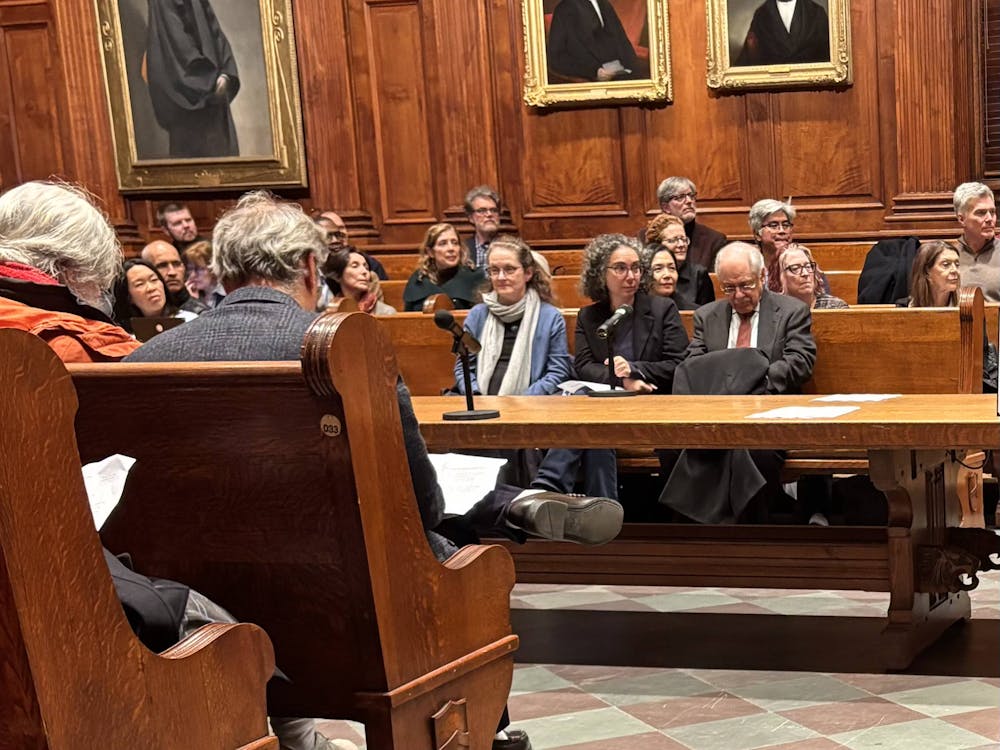Follow The Daily Princetonian's continuing coverage of Hurricane Sandy's aftermath here.
Almost a week after Hurricane Sandy passed through Princeton, the University has resumed normal operations. The local electric utility company has restored power to campus, the fallen trees have been mostly cleared off the walkways and roads and University facilities are open after a week of shutdowns.
Meanwhile, as many as 40 percent of the town residents were still without power as of Sunday afternoon, according to local officials, down from 80 percent of residents who lacked power last week.
“I don’t think it is time to reflect yet,” Princeton Township mayor Chad Goerner said Sunday. “We are still battling to get power back to our residents.”
But while the local community is still recovering, the storm did not leave much of an imprint on the University.
If anything, the passing of the storm has highlighted the differences between the University and the town. While undergraduate students enjoyed guaranteed food and warm shelter and only experienced a brief five-minute power outage, the town still copes with general power outages, closed roads and gas supply shortages all while temperatures drop significantly.
Graduate students who live off campus also did not have the same luck as undergraduates. As of Sunday afternoon, Stanworth and Ferris Thompson apartments still did not have power, according to University spokesperson Martin Mbugua.
Mbugua said Sunday that 110 trees fell on campus, up from an estimate of 50 trees on Tuesday.
In the wake of the storm, the University has offered a number of services directly and indirectly to town residents.
Jadwin Gymnasium has been added as a new emergency voting location for Tuesday’s election. The Carl Icahn Laboratory and the Computer Science Building were already planned voting locations.
The University also hosted an event that provided heating, charging stations and refreshments for Princeton residents on Thursday at the Friend Center. Firestone Library and Frist Campus Center, which were not officially open to support local residents, were unusually packed during this fall break week.
The University even provided meals to 150 first responders and hundreds of University critical personnel in the Rockefeller Dining Hall.

According to Mbugua, 800 employees worked at the University while it was officially closed.
“A large number of them either stayed on campus, sleeping on cots or air mattresses, while others stayed at nearby hotels,” he said. Only some of them were able to make it back to their homes during the worst part of the storm.
No injuries to current students, faculty or staff were reported. But in the town, the University Medical Center of Princeton at Plainsboro experienced a 50 percent increase in their emergency responses, according to the hospital. Longtime Township resident William Sword ’76 died Monday night when a tree fell on him while he was cleaning debris in front of his house.
According to the police, fallen trees had blocked Great Road, the street of Sword’s house, earlier in the day and complicated the arrival of emergency units. It is still unclear how much time it actually took for help to arrive.
All in all, the University’s capacity to provide power and amenities to its students exceeded the town’s capabilities.
UMCPP suffered a general power outage and its generators failed for 40 minutes last Monday evening when the storm arrived.
“Patient care was not compromised during the outage,” the hospital said in a statement, explaining that batteries kept critical equipment running.
The storm presented Princeton Borough and the Township with an opportunity to coordinate a joint approach which will become the standard when the municipalities consolidate in two months.
“It’s not the first time, but I think it was the most effective time,” Goerner said.
The Borough and Township set up a joint Emergency Operations Center staffed by representatives of both municipalities. Workers at this central location responded to emergency calls from both municipalities.
Despite the extensive damage, Princeton was not hit very hard compared to other parts of New Jersey. Between 1.75 and 2.43 inches of rain were recorded in Mercer County compared to more than 8 inches in Atlantic City, according to the National Weather Service. Flooding was not a problem in Princeton.
Wind gusts, however, did reach 68 miles per hour on Monday evening according to measurements taken at Trenton Airport.
Public Services Electric & Gas, the utility company that provides power to the University, the Borough and the Township, has called this storm the biggest in its history. At the peak of the storm, 77 percent of their 2.2 million customers in New Jersey lost power.
In Mercer County, 68 percent of the 137,000 PSE&G customers lost power. According to PSE&G official figures released by Gov. Chris Christie on Saturday, 23.5 percent of Borough customers and 28 percent of Township customers had no power at that point.
The company had been expecting to restore power in the Township by Saturday and power in the Borough by Sunday, though residents still lack power.
Local residents first lost power on Monday evening. The University lost power from PSE&G for 26 hours.
There is no estimate yet on the costs of the storm, Goerner said. Mbugua said the University does not have a specific idea of cost either.







